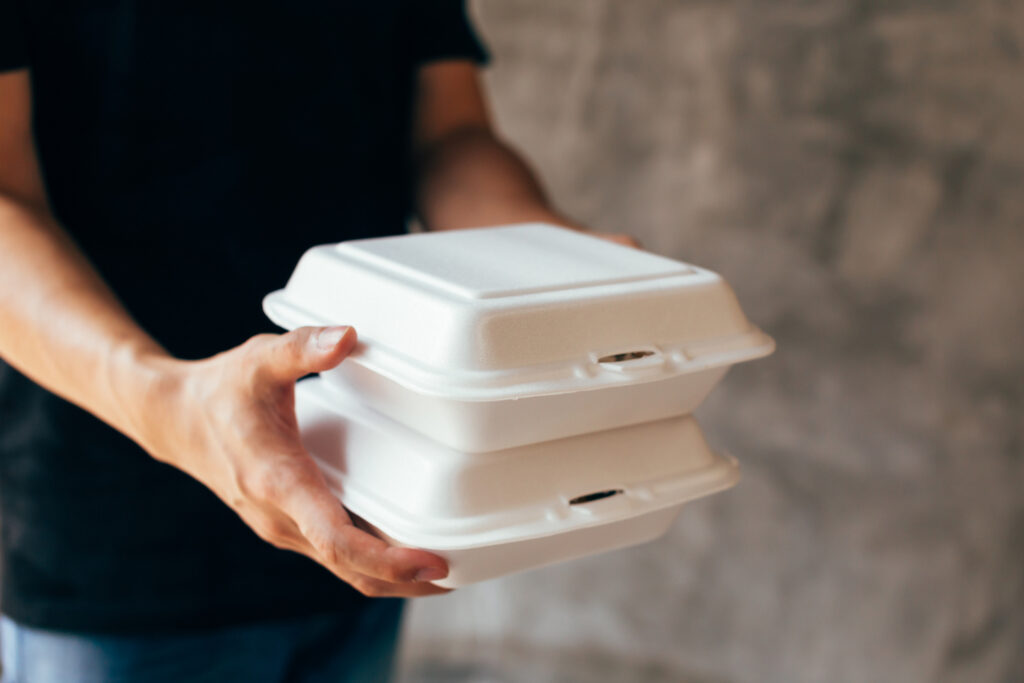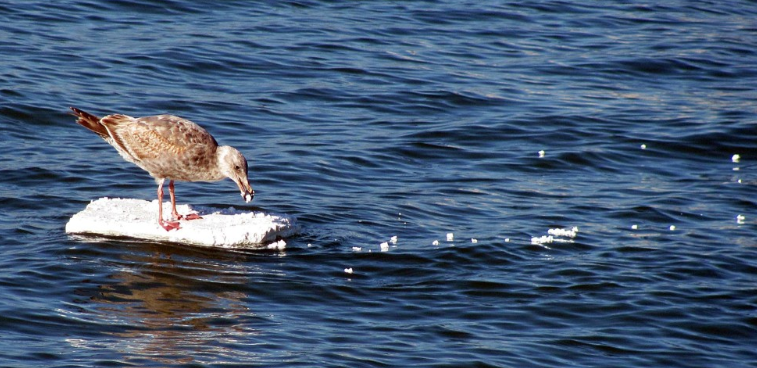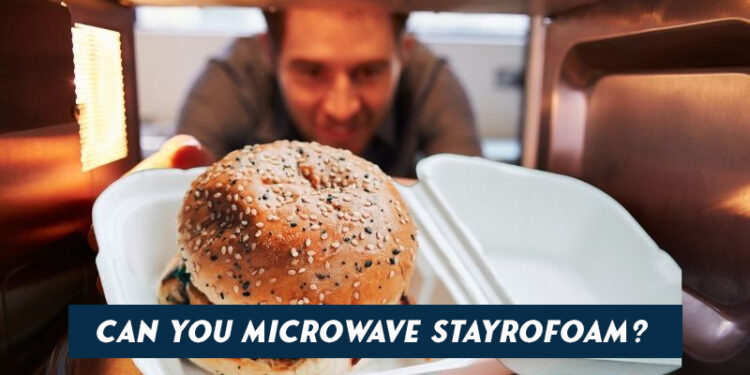Has your food arrived in foam? Or did you plop your leftovers in a Styrofoam container and microwave it? If you have then, you surely know about Styrofoam. But do you whether or not is it safe to conveniently put it in the microwave? Or more importantly, can you microwave Styrofoam? Why It Isn’t Safe To Microwave Styrofoam
Let’s look at some facts to understand this.
What Is Styrofoam?
Styrofoam is a registered trademark of Dow Chemical and is used in insulating buildings. Sometimes, it is confused with expanded polystyrene foam (EPF). It’s injected into melds and cheap to make and provides excellent insulation to food. That’s why it’s a favourite for many fast-food companies. Styrofoam, made from styrene and benzene, is frequently used as take-out containers, and in packing peanuts.
custom football jersey
men’s nike air max 90
wig stores
dallas cowboys jersey
nike air max 95
adidas outlet
custom basketball jersey
custom baseball uniforms
custom football uniforms
custom hockey jerseys
male sex toys
custom football jerseys
cheap nfl jerseys
Benefits Of Styrofoam
Styrofoam is cheap to manufacture and has an excellent shelf life. That means it’s reusable. You can easily put food in it and eat without worrying about washing plates. They were made for easy usability. In this fast-moving realm, time is valuable. Styrofoam helps save time. It also keeps food warm and nice.
But does it get worrying when you put it in the microwave?
Two Types Of Styrofoam
Traditional Styrofoam: Traditional Styrofoam is very dangerous to microwave. When used normally, they are stable but when heated, chemicals start to leak and could get into your food.

Microwave-safe Styrofoam: This Styrofoam is less common but is approved by FDA. Safer chemicals are used to construct this and has greater stability. To know if the Styrofoam is microwavable, check packet for FDA approval.
Disadvantage Of Microwaves
Microwaving food has been a part of our life for a long time since the 1970s. When you think of it, it’s the most convenient innovation of all time. But not all materials are microwave-friendly. Some are more hazardous than others. For example, metal can’t be used as a microwaving container, as the waves won’t penetrate it. Aluminium foil can’t be used as waves won’t be able to penetrate and could lead to a fire hazard. Paper plates are also off the table.
Understand the verification process at Fair Go in this article. Click https://ywalane.org/scientific-games-the-best-gaming-provider to learn about the steps involved in verifying your identity and why it’s important for your safety, as well as the best game provider.
Therefore, ceramics and glass are workable choices for microwavable crates. But the downside is that they are very delicate and harder to handle and fragile. Therefore, though microwave is a convenience in everyone’s life and yet it poses many problems.
6 Reasons To Can You Microwave Styrofoam?
- Can you microwave Styrofoam? Research says no!
- Microwaving food or drinks in Styrofoam is likely to increase your chance of having cancer. This is because Styrofoam when heated can leach into your food.
- Styrofoam contains a hazardous chemical known as styrene. Styrene is a probable carcinogen for humans and animals.
- Consuming styrene can result in risk of acute myeloid leukemia, a rare form of leukemia. The risk of getting a particular type of nasal cancer increases five times when exposed to styrene.
- Styrene and styrene 7-8 oxide has been linked to lymphatic cancer and cancer in the esophagus and pancreas.
- When exposed to heat, Styrofoam begins to break down releasing chemicals into your food. Food in the microwave can reach up to 70 to 100 degrees which starts the leaching process. And the more the heat, the more the leaching happens.
Even when it’s stable, a small amount of styrene is left in as residue. Therefore it’s better to avoid Styrofoam altogether.

Therefore, to answer the question “ can you microwave Styrofoam?” is a strict no. Don’t microwave Styrofoam unless you absolutely have to.
States Which Have Banned Styrofoam
Maine and Maryland were the first two states to begin banning Styrofoam products at the state level. The full list of states that have banned the sale and distribution of Styrofoam products as of 2021 are:
- Colorado, effective January 2024.
- Maine
- Maryland
- New York (effective January 1, 2022)
- Vermouth
- Virginia (effective July 2023 for large corporations, July 2025 for small businesses)
The State Has Not Yet Enacted A Nationwide Ban, But At Least One City Or County Has Enacted Laws
- California
- Florida
- Hawaii
- Main
- Maryland
- Minnesota
- New York
- Massachusetts
- Oregon
- Texas
Alternatives To Styrofoam
- PET Plastic – PET plastic holders are adaptable, lightweight, and recyclable. PET represents Polyethylene terephthalate.
- PLA Plastic – PLA plastic holders are compostable.
- Paper/Double Poly Coated Paper – Double poly-covered paper items are strong and dampness safe.
- Plant Fiber – Plant fiber dispensable items are biodegradable, compostable, and lightweight. Utilize fluid safe and microwave safe plant fiber disposables to store and warm your suppers.
- Post-Consumer Paperboard – Post-buyer paperboard items join harmless to the ecosystem properties with the sturdiness of paperboard development.
- Reusable Polypropylene Containers – Recyclable polypropylene holders include a sturdy, engineered gum development ideal for a considerable length of time applications.
Products That Can Be Safely Used In Microwave
Glass-clay products and heatproof glass products are protected in the microwave.
Stove cooking sacks, crates made of straw and wood (without metal), wax paper, material paper, and vented plastic packs are on the totality safeguarded to operate in the microwave.
Paper items that are explicitly endorsed for microwave cooking are protected to utilize.
Environmental Issues Of Styrofoam
Styrofoam hurts the climate, in many ways. We should investigate the three significant impacts of Styrofoam.
Styrofoam In Landfills
Landfills all over the planet is full of Styrofoam. This is an exceptionally stressful measurement thinking that landfills are quick turning out to be full. Around 1,369 tons of Styrofoam is covered in U.S. landfills every day.
Because of the hurtful impacts of Styrofoam, numerous urban areas and nations have prohibited the business utilization of Styrofoam, including California, Seattle, Washington, Manila, Philippines, Toronto, Canada, Paris, France, Portland Oregon, and Taiwan.
Poisonous Pollutants From Styrofoam
Styrofoam contains Styrene with filters into food varieties and beverages served in Styrofoam compartments causing pollution. When a similar holder is presented to daylight, it makes hurtful air poisons that defile landfills and dehydrate the ozone layer.
At the point when Styrofoam is being fabricated, the cycle delivers a lot of ozone into the air. And as we all know ozone is known for causing respiratory and natural issues.
Likewise, billions of Styrofoam cups involved yearly in corner shops, eateries and lounges end up in landfills causing ecological contamination.
Styrofoam Impact On Animals

Styrofoam is one of the most hurtful kinds of waste that exists today and affects our planet’s biological framework adversely.
Styrofoam hurts creatures rummaging for food from landfills. Styrofoam items ordinarily effectively fall to pieces into little pieces that can stifle creatures.
Is Styrofoam Biodegradable?
Styrofoam contains polystyrene what separates at such a leisurely pace that it isn’t viewed as a biodegradable item.
With regards to what amount of time does it require for styrofoam to break down, as indicated by Styrofoam realities, the greater part of the polystyrene that winds up in landfills can take anything between 500 to 1 million years to disintegrate.
Styrofoam is an entirely steady item given that its particles are clung to each other emphatically. This sort of dependability causes the plastic to repulse water and oppose acids, bases, salts, and other destructive substances. This additionally gives it a long time span of usability making it helpful and practical for organizations.
The greatest drawback to this synthetic solidness is that it consumes a huge chunk of time to separate and along these lines, once in the climate, it can stay for ages.
As indicated by researchers, Styrofoam is delicate to daylight in a cycle called photodegradation. Constant openness to daylight influences the external layer of the plastic, stains it, and transforms it into a fine substance. This cycle can cause slight Styrofoam bundling to separate in a couple of years.






